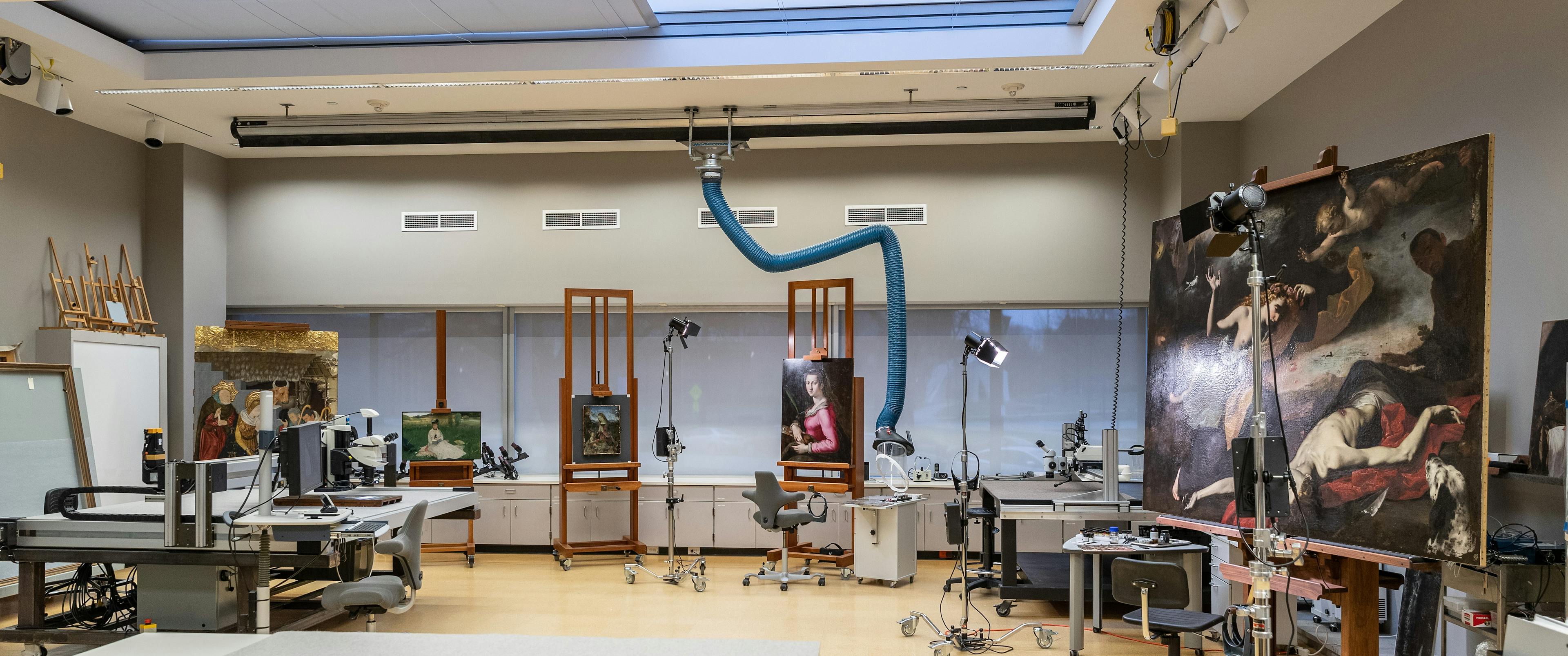Paintings Conservation Lab

The paintings conservation lab examines, analyzes, and conserves Western paintings ranging from the medieval to the contemporary period. Working closely with curatorial and conservation colleagues both within and outside the museum, paintings conservation bridges scientific investigation with art historical research to provide a more holistic understanding of the paintings in the CMA collection. Through dedication, in-depth study, and research, the paintings conservation lab is committed to conducting treatments that mirror the quality and excellence of the paintings within the CMA collection.
The paintings conservation lab is a dynamic space for the constant exchange of ideas and treatment methodologies where visiting scholars, scientists, and conservators explore and share approaches to address complex structural and aesthetic treatments. As the field continues to evolve, conservators strive to remain up to date with best practices through professional development activities, such as attending workshops and national and international conferences, and through collaborating with external partners, including Case Western Reserve University and Cleveland Clinic.
Utilizing state-of-the-art equipment, including X-radiography and infrared reflectography, and conducting molecular and elemental analysis, paintings conservators research the materials and techniques used by artists represented in the CMA’s expansive collection. Information gathered from these analytical techniques also helps guide treatment protocols and inform long-term preservation plans.
The paintings conservation lab is dedicated to public education, outreach, and engagement. Through actively providing and supporting educational opportunities and internships to emerging students and conservation graduate students, CMA paintings conservators share new discoveries about paintings in the collection and conservation practices.